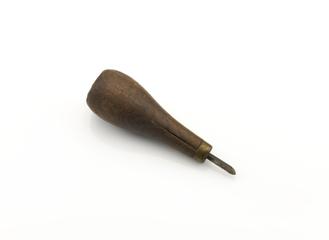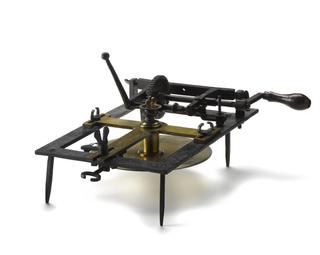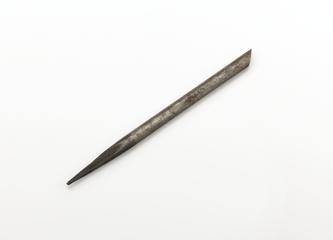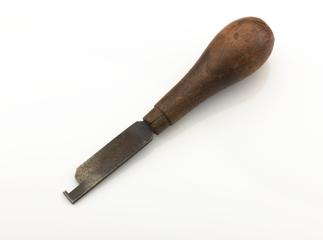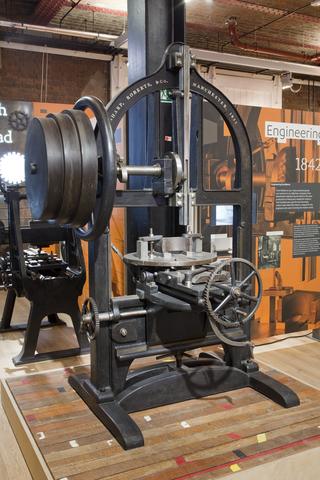
Model, scale 1:12 of Bersham boring mill 1775
- Made:
- Unattributed place




Model, scale 1:12 of Bersham boring mill 1775
"This model represents the boring mill established by John Wilkinson at Bersham near Wrexham, the first mill in which a boring bar supported at both ends was used. It was thus the forerunner of the modern type of machine. Its invention had a wide influence upon the progress of contemporary engineering practice for it enabled cylinders to be bored with much greater accuracy than had hitherto been possible. The success of the steam engine as developed by James Watt owed much to Wilkinson's machine and all Watt's early cylinders were bored upon it.
The mill is driven by an overshot waterwheel situated between two walls. Upon one side are the larger boring bar and a heavy facing lathe possibly used for turning cylinder covers, pistons or cutter-heads, and also the rails and truck which, it is presumed, were part of an old mill of the Smeaton type (see inventory no. 1930-187) which was in general use previous to Wilkinson's invention. The lathe has a hollow mandrel in which the end of the bar carrying the cutter-head of the old mill was held. The cylinder was mounted upon the truck and was fed 'over' the rotating cutter-head. The success of Wilkinson's machine was due to the rigidity obtained by supporting the boring bar at both ends and by securing the cylinder. Upon the other side of the wall js the smaller boring bar and a wooden bed lathe with a long bed. The gearing used here has two rows of staggered teeth which would increase the smoothness of the drive and from this it is thought probable that the machinery on this side was installed at a later date than that on the other.
The large driving wheel in each case is wedge-keyed to the squared end of the boring bar which is supported in a bearing at each end. Mounted on the bar and rotating with it is the cutter-head which is fed forward through the cylinder by means of a rod passing down the centre of the hollow bar and attached to the head through a longitudinal slot. The other end of this rod is prevented from rotating by a cross bar resting on two wooden beams and is attached to a rack. Rate of feed is governed by a weighted lever acting through a pinion engaging with the rack. The cylinders are supported in heavy timber cradles and are secured with chains.
It is not definitely known how the cylinders were inserted and removed, but it has been assumed that they were slid over the ends of the boring bars. To make this possible the wooden members carrying the outer bearings of the bars have been made removable, and the cross bars made detachable from the feed rods.
The Bersham Works were founded in 1775 and closed in 1795. The larger of the two bars, measuring approximately 1 5 ft long by 1 2 in diameter is also preserved in the Museum.
The model has been designed from the plan of the Bersham boring mill made by John Gilpin and preserved in the Boulton and Watt Collection in the Birmingham Reference Library (a copy is exhibited with the model) and from a consideration of contemporary practice in the construction of gearwheels. waterwheels and machine details as exemplified by the Carron boring mill, drawings of which are given in Smeaton's reports, and from various other sources. It may be assumed therefore that the plan of the model represents the Bersham mill as accurately as can be ascertained, and that all elevations not governed by the plan represent the actual mill in character though they may differ from it, more or less, in detail.
Details
- Category:
- Hand and Machine Tools
- Object Number:
- 1927-985
- type:
- model
- credit:
- George Wailes and Company Limited
